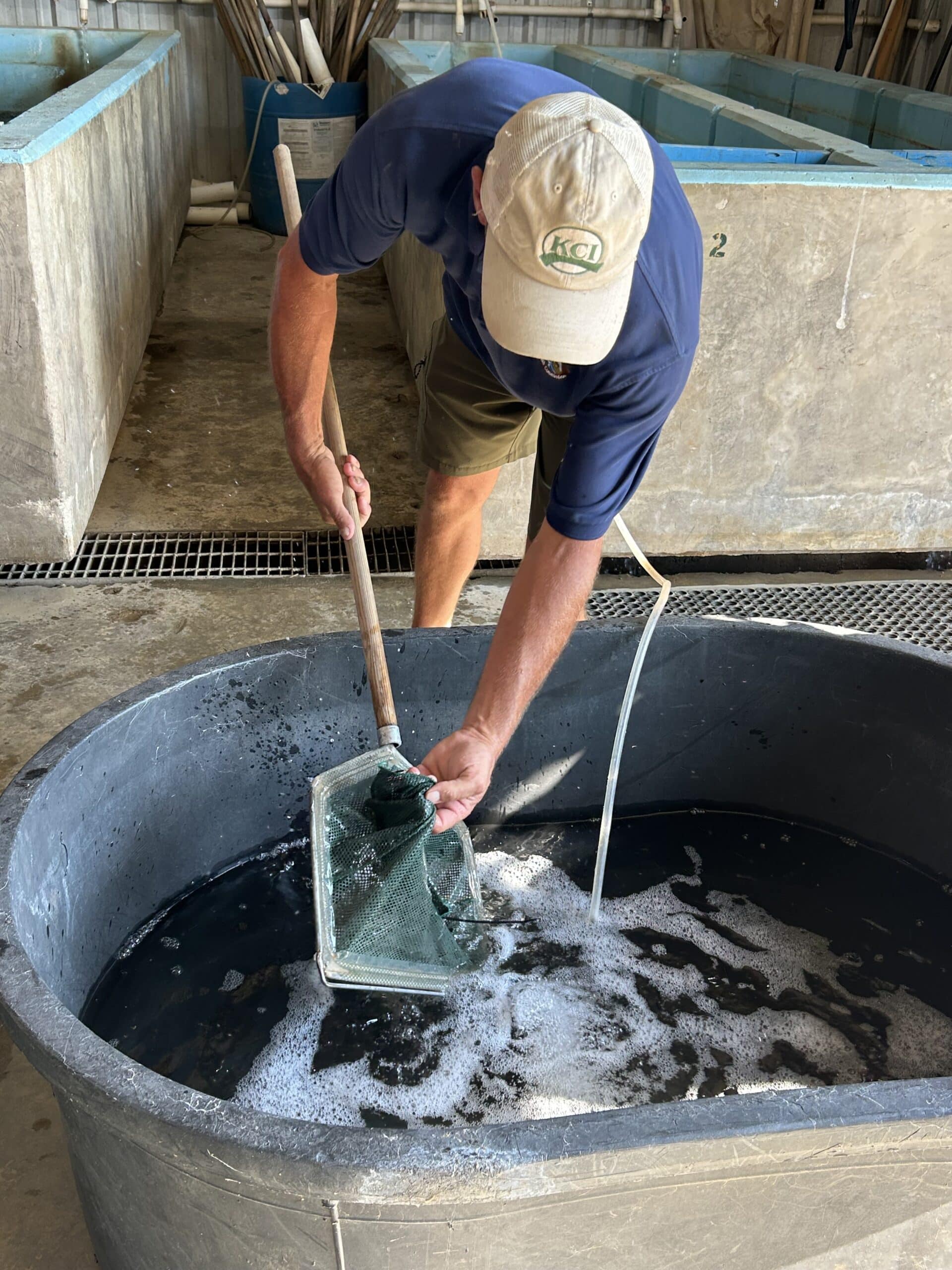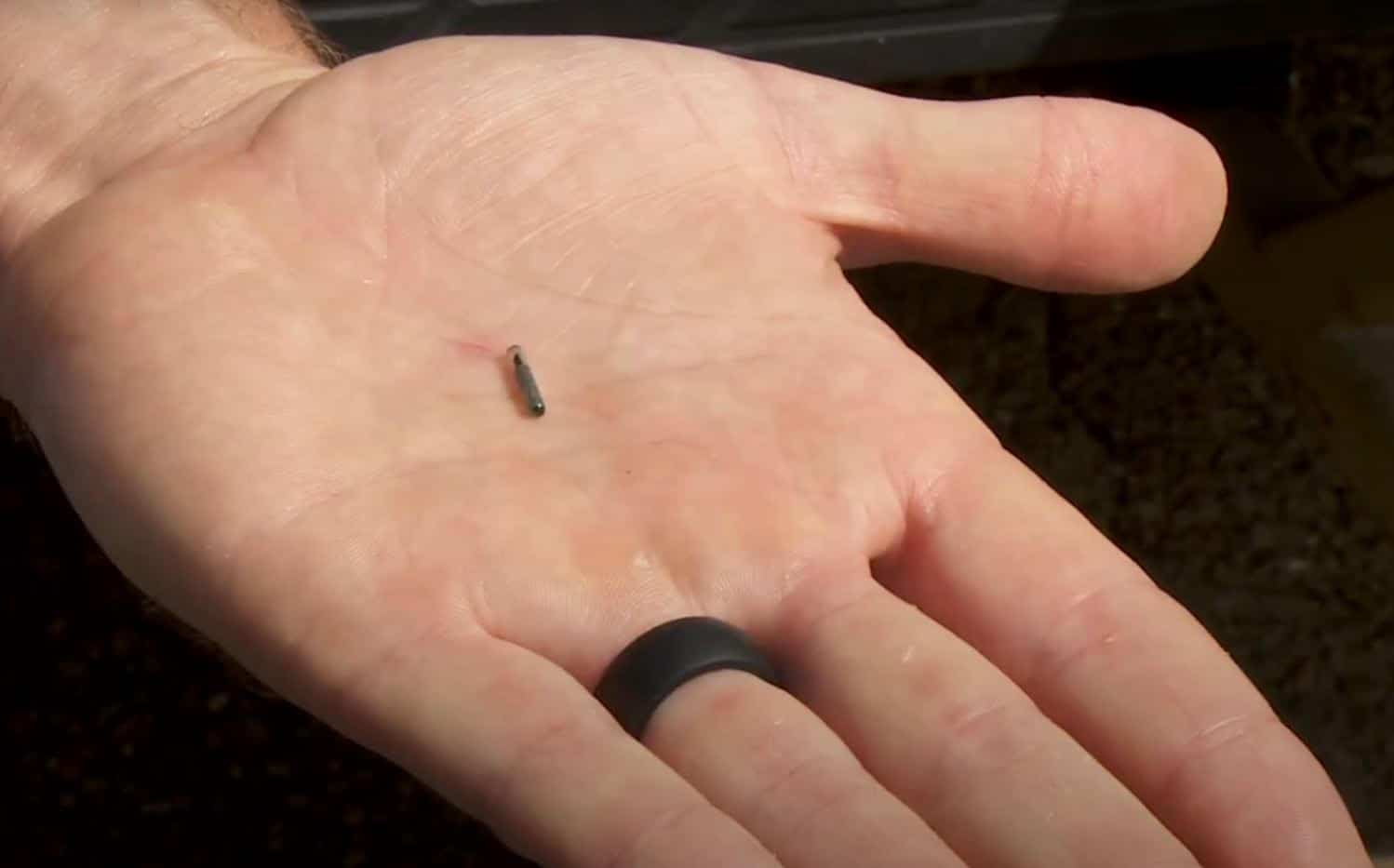LONOKE– August is usually associated with the final trek of summer; the last stretch before school begins and the heat finally breaks. For the AGFC Fisheries Division, it’s time to tag alligator gar.
For the second year, excess fry from the Private John Allen National Fish Hatchery in Tupelo, Mississippi, were shipped to the Joe Hogan State Fish Hatchery in Lonoke in May where they were cared for until ready to release into the wild. By August they were about 12 inches long, big enough to not be eaten in the wild but still fairly slim. Since the fry originate from the Mississippi river basin, stocking them in the Arkansas River introduces no genetic issues with gar already present.
Top photo: Chelsea Gilliland, AGFC large rivers biologist, inserts a tag into an alligator gar.
By Verity Callahan

Gar populations have declined in the state from a combination of river modifications such as dams or levees blocking the temporarily inundated floodplains they require to spawn, as well as a lacking reputation.
“Anglers, both historically and contemporary, believed that gars decimated popular sportfish populations and therefore designated them a ‘trash fish,’” said Chelsea Gilliland, AGFC large river fisheries biologist. “However, the forage base for Alligator Gar specifically generally consists of commercially sought-after species such as carp, buffalo and shad.”

Despite this notoriety, gar remain an important presence in Arkansas waters that help maintain populations of other fish species within sustainable levels. These apex predators keep ecosystems in check, hence the necessity of keeping populations stable in water such as the Arkansas River.
Tagging gar is the first step in helping monitor populations and gauging how they adapt in different waters. Tiny fry start out in one vat, and get spread out as they increase in size. A gar that attempts to eat his smaller tank mates is quarantined to the “bully fish” vat.
Last year’s efforts netted 122 fish large enough to release; this year, increased care and monitoring resulted in 407 gar reaching the appropriate size for tagging.
“It’s been a little bit better just keeping them indoors but it’s a lot more intensive, because you have to feed them every day and clean them up every time you feed them,” Chad Wicker, hatchery manager, said. “We just gotta keep refining the process and getting better survival.”
To tag gar, about five fish at a time are taken to a separate tank, where a small amount of an anesthetic drug concentration is put in the water to relax the fish and minimize handling stress; this concoction is perfectly harmless to the fish.
“This calms the fish down so it doesn’t fight– we don’t want to injure the fish,” Tommy Laird, AGFC fisheries chief, explained. “The chemical goes over their gills and slows their breathing, meaning they are less dangerous to tag and overall easier to move.”

Once the gar are properly sedated, biologists record each fish’s weight and length and take a fin clip to record its genetics. They also insert a PIT (Passive Integrated Transponder) tag near the fish’s tail, a small microchip that is coded with a unique 15-digit number sequence. This sequence is specific to each fish and provides a way to track information such as stocking history, growth and movement patterns should it be captured again. All of this information helps track how well the gar are doing as they get bigger and move through our waterways.
Once the fish are examined and tagged, they are carefully moved back into a tank to recover for a few days until they are ready to be stocked. Hatchery staff have a special new tool called electroanesthesia gloves, which have proven fairly useful transporting the wiggly gar safely and making the wearer look incredibly cool.
Jason Miller, Assistant Chief of Fish Culture, demonstrated how the gloves function. “They create an electrical field from one hand to another. If you hold a fish with your right hand at the head and the left hand at the tail, then you’re creating an electrical field that anesthetizes the fish. As soon as you let go of it, they are [free to swim]. There’s no recovery time or anything, they’re instantly ready to go.”
The alligator gar is Arkansas’s largest fish species and one of the oldest recorded in the state, with fossils dating back to the time of the dinosaurs. These gar are also the largest freshwater fish in the southeastern U.S.; some of the largest have weighed over 300 lbs, making the fish sought after for their trophy potential. In 2019, alligator gar was even declared Arkansas’s State Primitive Fish.
The Alligator Gar Species Management Team was created in 2008 to help support dwindling populations of gar across the state through habitat improvements and reestablishments efforts. Combined with tagging and research, much work is being done to help the species thrive in The Natural State.
To learn more about this fascinating species and the work being done with them in the Arkansas River, check out the Arkansas Wildlife Podcast Episode 50 – All About Alligator Gar, where host Trey Reid sits down with Gilliland. Click here to listen on the AGFC’s Youtube channel, or download the podcast through your favorite podcasting platform here.
Interested in catching a goliath? Visit www.agfc.com/gar for more information on what you need to fish for gar and how they are managed.




